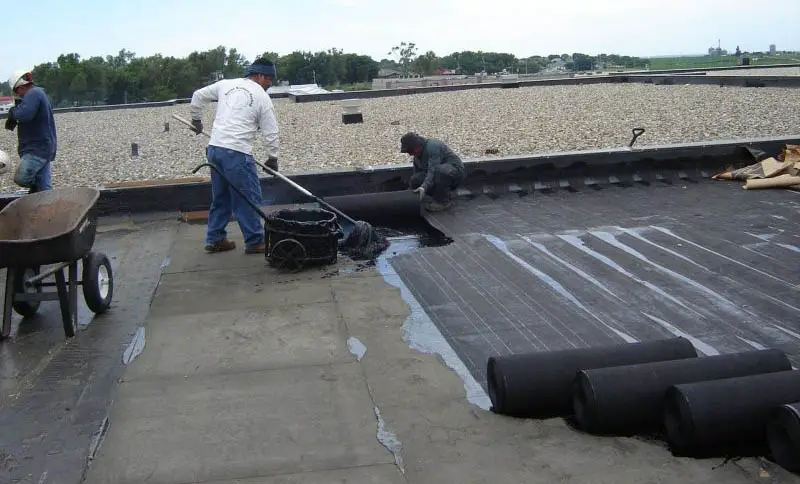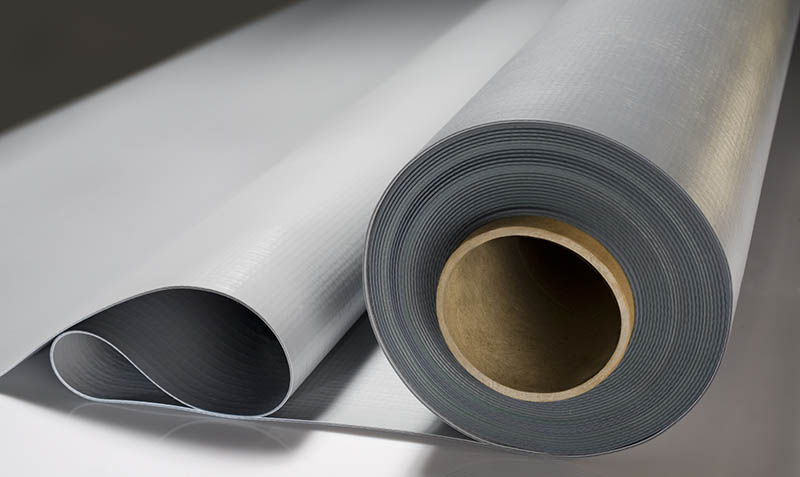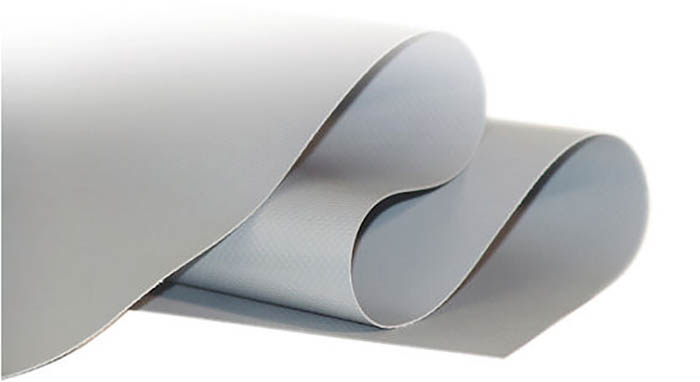Flat roof covering. The purpose of any flat roof system is to keep a building safe and dry from the elements, as well as help make the home as energy efficient as possible.
Contents
Any flat roof material, then, must help protect a roof from rain and snow, as well as provide protection from extreme heat.
The biggest concern for homeowners should be how effectively their flat roof can prevent leaks and other damage caused by water, typically caused by small pools of water on the rooftop.
Options available for flat roof coverings
Over the past 100 years, builders and contractors have designed a number of different flat roof coverings, each of them engineered specifically to provide optimal protection and coverage. Those options include the following:
- Rolled asphalt
- Built-up roof (BUR)
- Modified bitumen
- PVC membrane
- TPO (thermoplastic polyolefin)
- EPDM (ethylene propylene diene monomer)
Of these options, the first three options consist of multiple membranes sealed together with heat and adhesives. They are known as multi-ply membranes.
The last three options are all single-ply membranes made from advanced chemicals and polymers. They have seams that must be sealed together.
Making the right choice for the best flat roof covering
So how do you make sense of all these different types of flat roof coverings and make the best choice?
The easiest starting point is to consider the pros and cons of each option, based on factors such as price, ease of installation, durability, environmental impact and protection.
As we will see below, the EPDM rubber roof has largely emerged as the flat roof of choice due to its ease of installation and relatively low cost.
- Well Suited for Retrofit Installations.Fit Type: Universal Fit
- Flexes very well
- Eliminates irritating roof rumble
- Requires less lifetime maintenance
- Specific Gravity:1.41
#1: Rolled asphalt
The rolled asphalt roof covering is similar to putting asphalt shingles on your roof. It consists of multiple layers of tarpaper rolled in asphalt and applied to the roof.
In addition, small crushed stones are glued to the top of the surface, giving the asphalt layer additional protection from the sun’s UV rays.
This method has a projected lifespan of 60 years. It has a long track record of success, and it is a well-understood roofing system.
The only problem, of course, is that it is a solution created nearly a century ago, so it does not take advantage of advances in chemistry and polymer manufacturing to create a truly state-of-the-art solution using environmentally safe materials.

#2: BUR (built-up roof)
The BUR, also known as the tar and gravel roof, is also a multi-ply solution. In it, each tar-soaked ply is applied with a hot blowtorch or other extreme heat source.
Built-up roofing consists of 2-3 layers of bitumen sheet bonded together through the use of adhesive or hot bitumen. Then, a layer of gravel is placed on top to provide an additional layer of protection.
While this solution has demonstrated good waterproofing ability, the components of the roof (i.e. the “bitumen sandwich”) are unrecyclable and not reusable.
Moreover, performance is too dependent on the expertise of the installation. In other words, a perfectly good roof can be ruined by a sloppy or imperfect installation.

#3: Modified bitumen
This type of roof material is similar to the BUR option, except that it includes extra rubber and elastomers in each layer. This makes the roof more flexible as well as stronger. This is also a well-tested solution with proven waterproofing ability.
However, this is still considered a “heavy” roof because of all the layers involved. Thus, you really need to check out the structural characteristics of your home or building to make sure that it suits a modified bitumen roof.

#4: PVC
At one time, the PVC membrane was the dominant style of single-ply membrane added to the flat roof of residential homes. It is durable, and is also very efficient because all of its seams are hot air welded.
Thus, even though there are seams, they have been bonded together very tightly, making it very difficult for any water to penetrate the roof. They are designed to last anywhere from 20 to 30 years.
However, there are definitely drawbacks to the PVC membrane roof, many of them related to the environmental profile of this material.
According to scientists, there is a large risk to the environment from the way PVC membranes are manufactured, used and disposed of. For that reason, some builders and contractors will refuse to work with them any longer.
If your builder recommends using a PVC roof, you should definitely ask about its potential environmental impact.

#5: TPO
This is the newest type of flat roof and, as such, is relatively untested. This is a single-ply membrane that is durable and flexible. It is made from recycled content, and the roof itself can be reused.
And, from an environmental perspective, the roof does not pollute rainwater runoff. It has a projected lifespan of 20 years.
However, in terms of drawbacks, this roof is not as flexible as PVC, and it cannot be easily recycled. It is also prone to puncture. If that happens, then the risk of water leakage is greatly increased.

#6: EPDM
The EPDM rubber roof is easily the most common type of rubber roof that you will encounter in the residential housing market. It is readily available, simple to apply, and relatively low cost.
Homeowners love this solution because it saves them money, while roofing contractors love this solution because it does not require any special materials to apply. It is also so easy to install that just a quick one-or two-hour training class may be all that’s needed.
Thus, when many people use the term “flat roof,” they are really talking about a rubber roof. The EPDM roof is now the most common flat roofing system in the U.S. flat roof market. The biggest allure, of course, is the low up-front cost.
- Well Suited for Retrofit Installations.Fit Type: Universal Fit
- Flexes very well
- Eliminates irritating roof rumble
- Requires less lifetime maintenance
- Specific Gravity:1.41

Potential problems with flat roof coverings
The problem with any single-ply membrane solution (including the EPDM roof) is the potential for leaks. In fact, the common complaint is that the projected lifespan of a rubber roof is just a few years.
Some have claimed that single-ply membranes are especially susceptible to puncture. So how is that possible, given that EPDM manufacturers claim that their product has a lifespan of 20-30 years?
The problem is with the seams of the membranes, which is where the majority of leaks begin. Since the roof is flat, there is no place for water to go after a heavy rainfall. This is in contrast to a sloped roof, where water naturally runs off.
This inevitably leads to a situation where water begins to “pond” on the roof. And these “ponds” tend to occur exactly where the seams are located! Over a long enough period of time, all of that standing water applies a great deal of stress to the building, resulting in a leak.
Moreover, there is another problem faced by flat roof owners – any protrusions or penetrations that break the surface of the flat roof create new opportunities for leaks.
These penetrations include skylights, vents, exhaust pipes, chimneys and roof hatches. Thus, attention must be paid to protecting these penetrations from water leaks, such as by the addition of flashings.
Environmental issues with flat roof coverings
Just a decade ago, environmental concerns were just a footnote. Now they are front and center, and that has greatly changed the way builders, architects and contractors think about flat roofs.
For example, the PVC roof was formerly the roof of choice. It was modern and high-tech, but it had problems – everything from how it was manufactured to concerns that rainwater run off contained harmful pollutants from the roof itself.
Thus, unknowingly, homeowners could be doing environmental damage to their own property!
Even the EPDM flat rubber roof, now the roof of choice by many homebuilders, has its share of environmental concerns. For example, while it has solved the problem of polluted rainwater runoff, it is still a man-made solution derived from oil sources.
That makes it a non-sustainable product from an environmental perspective. It is also prone to puncture, as you might expect from any rubber product. This tends to negate one of its positives – its extreme durability and flexibility.
Conclusions about types of flat roof coverings
Ultimately, the choice of which type of roof is best for you depends on how you define the term “best.” Does this term refer only to protection from rain and snow? Does it refer to material efficiency? Does it apply to environmental concerns? Or just to price?
In analyzing the different trade-offs involved in the selection of a flat roof, the current leader is the EPDM rubber roof. It is easy to install, relatively inexpensive, highly durable, and easy to find.
That has made it the market leader in the U.S. flat roof market. For many roof contractors, in fact, the term “flat roof” is now synonymous with “rubber roof.”
In protecting the flat roof of your home, the choice of flat roof covering plays an important role. It can protect your home from rain and snow, help to regulate the energy efficiency of the building, and provide you with the piece of mind of knowing that the most innovative materials and techniques have been used in its creation.
- Well Suited for Retrofit Installations.Fit Type: Universal Fit
- Flexes very well
- Eliminates irritating roof rumble
- Requires less lifetime maintenance
- Specific Gravity:1.41
Last update on 2023-07-04 / Affiliate links / Images from Amazon Product Advertising API
Hi, I’m Jim. I was a roofing constructor for 20 years, before deciding to start myrooff.com and gather the best content about roofing. I love woodworking and construction and it was only natural for me to start this passion project of mine. Thank you for visitng.


